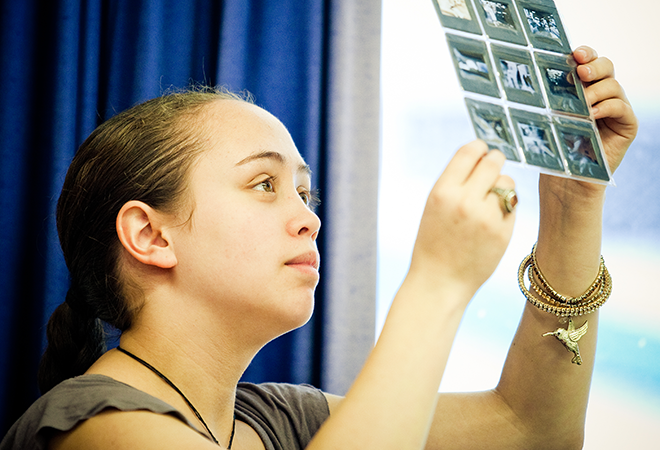
Māori Design and Tertiary Education
Status
Completed: 22 March 2012
Project Details
A project, completed in 2012, to identify and collate specific methods, practices and strategies for use in tertiary design teaching and disseminate important ideas relating to te Ao Māori and Māori design principles, practices and processes to tertiary design educators. A collaboration of Otago Polytechnic and University of Otago.
Aims:
The main aims of the project were to:
- identify key Māori design tertiary teachers at universities, polytechnics and wānanga
- articulate the importance and key findings of Māori design teaching
- identify strategies and resources to add to the teaching of design
- build a design research whānau (research collective).
Methodology:
The project methodology involved:
- a Māori-centred research approach to all research methods
- case studies of Māori designers and design educators
- interviews with tertiary level lecturers/educators to identify and collate specific methods, practices and strategies currently used in teaching.
Team

Caroline McCaw
Project Leader
Otago Polytechnic
Associate Professor Sarah Wakes
University of OtagoTracey Gardner
Independent ResearcherStatus
Funding
$10,000.00 (excl GST)
Key Findings
The key findings from the project included:
- All of the research participants agreed that the traditional Māori model for education is very successful and reflects good practice. This model is encompassed from pre-school through to postgraduate degree level learning through Te Kohanga Reo (Māori language preschool), Kura Kaupapa (Māori-centred primary school), and Whare Wānanga (University, place of higher learning).
- Whānau-based learning was also identified as possibly the best learning environment for Māori content by some participants. In this model of delivery, Māori theory is taught intrinsically, and is embedded in all course content.
- All the participants struggled with the idea of separating concepts of art and design. There is no word or theme that separates creativity and life, for example ‘wairua’ refers to creativity, but also refers to the health and well-being of the community. Examples of this include raranga, whakairo, which record stories and histories (for the wellbeing of the community). Here the term hapori is also important, more closely reflecting ideas of community, and the collective importance of creativity to the community.
- Most of the participants were working within Universities/Polytechnics/ITPs, rather than Māori-centred courses. Some of these institutions had started by having separate marae-based or traditional model learning/courses, either in the form of a Māori art/design stream or through teaching Māori art/design in another department, such as Māori Education or Māori Development programmes. In all cases these separate courses had recently become integrated into mainstream Bachelor of Art and Design schools. Lecturers in these recently changed environments identified both advantages and disadvantages, citing potential access to resources and possible pathways in degree programmes as good but overall the programme experience as an uncomfortable fit.
- In all cases teaching and learning required the development of strategies to integrate cultural models, and not concede to token inclusion at a content level. Some of these identified strategies are outlined: Strategy 1: Māori educators introducing Māori content; Strategy 2: A well-resourced, integrated approach; Strategy 3: Putting culture and identity in the centre; Strategy 4: Regeneration, revitalisation, innovation and future focus.
Key Recommendations
The key recommendations from the project included:
Research whānau | The need for the ongoing development and maintenance of a research whānau was a clear outcome of this project. Many of the lecturers we spoke to were working without a support network in their school and appeared to be clear about their own visions, but worked very hard, without the benefit of a network in the tertiary sector.
Institutional change | At a strategic level there are very clear and relevant lessons learned from the research project. Change within institutions however, will require a dedicated response, and will require a well-resourced and integrated approach. Some widespread understandings as well as some particular and detailed adaptations will be required.
Tertiary level design curricula | If the strategies identified from the project are considered, with clear consultation and guidance and partnership with local iwi, the opportunity exists to develop tertiary level design curricula relevant to the New Zealand context.
Further research | While this work has been begun through this project further development of a relevant set of resources was outside of the scope of this initial research. The development of resources suitable for teaching at tertiary level is identified as very relevant future research. This research could develop case studies relating to the outcomes of this report, using individual designers (and design lecturers and identified student projects) as examples of models of contemporary design practice. This is a worthy applied research project which could provide clear examples and practices.
A research report prepared by Caroline McCaw, Sarah Wakes and Tracey Gardner.
(PDF, 2.9 MB, 45-pages).
- 23 March 2012